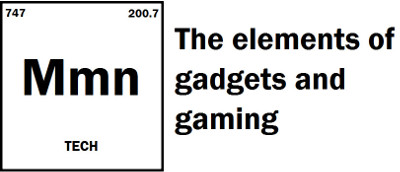

Thoughts on the M1 ARM Macs
There was a time when I was quite interested in Apple’s product lineup. As you can tell from a lot of the earliest articles on this site. Nowadays, not so much. Frankly, their stuff became dull as dishwater after Steve Jobs passed. This was also around the same time their computers started to morph into disposable tech that you could neither repair nor upgrade. All the while remaining more expensive than their PC counterparts, while offering less in terms of performance and features.
This year, Apple introduced the first new change in a long, long time that actually intrigued me. They moved their traditional computing stack to their own in-house ARM processors. We’ve been expecting this for ages, but it still caught us by surprise. This would be the first time in 13 years that Apple’s entire product lineup was running on a unified architecture. With all the benefits there in.
Then there was that unveiling. The one where Apple claimed that their new “M1” processor, based on A14, would be twice as fast as competing processors. Like a lot of tech heads, my bullshit detector went off. And well, yeah, this claim was indeed a heaping load of manure. Even Apple themselves have walked back on it. They’re now saying it’s twice as powerful as competing low-energy CPUs. Yep, Apple is certainly no stranger to fudging the numbers when it suits them.
That said, we have the benchmarks in and the M1 certainly does meet this revised claim of being faster than other low energy processors. What you get is desktop class performance with mobile class energy savings.
In his recent review, Linus measured load power consumption for the new Mac Mini at just 24w. Even taken to the redline, it still only peaked at 32w. Which is half what the Core i7-8700B from the last gen Mac Mini is rated for in terms of its thermal design power. Let me emphasize that this is at the wall. For the entire computer, not just the CPU. Yet it still manages to keep up with, and sometimes exceed, Intel’s offerings in terms of performance. Power savings at idle are far less impressive, but still and improvement over x86 processors.
On the software side, the vertical integration between MacOS and iOS is an interesting and some would say overdue play. The M1 computers can run apps designed for the iPad and iPhone with no emulation. Though the GUIs certainly aren’t there yet. Apple still hasn’t thought to put a touch screen in a laptop. Everything I’ve seen though shows snappy performance, and even surprisingly positive results from Rosetta 2 for older Intel apps. It’s not quite 1:1 with native x86 CPUs, but it’s close enough to have no serious impact on productivity.
My one concern is that OS X… *cough* Mac OS Big Sur seems to be moving in the direction of an iOS-like walled garden. Something I had mentioned as a potential problem in my original impressions article. However, that tight integration means tighter control of the platform and potentially better performance down the road. There’s going to be trade-offs. You just have to decide whether they’re worth it for your particular workflow.
But yes, this is potentially a pretty big game changer. More efficient computers means less energy consumption. Which is good for laptop battery life, and your electric bill if you’re a desktop user. The GPU performance is decidedly less impressive. Still better than Intel’s integrated UHD graphics, but not quite up to snuff with discrete units. Which makes it less appealing to those doing GPU intensive work. (Let’s be honest, nobody games on Macs.) However, this is something that will suit the vast majority of users. Offering relatively low cost (for Apple) and cool running devices that actually can compete with what AMD, and especially Intel, are in similar categories.
That said, as much as I’ve crowed about the energy efficiency improvements with ARM, I don’t want people thinking that this is an environmentally friendly move on Apple’s part. Yes, the M1 sips a lot less power than previous machines. However, these are perhaps the most disposable computers Apple has ever made. For a desktop or laptop class computer, I’d at minimum expect an M.2 slot. SSDs are the most likely component to fail. However, there’s nothing inside that can be repaired or upgraded. These computers are designed to be thrown out when anything breaks, or if its storage/RAM limitations no longer meet your needs even if performance is still adequate.
Unfortunately, eWaste has become a much bigger problem carbon emissions and plastic drinking straws ever were. A lot of these components end up shipped to third world countries to be “recycled”. Places that lack proper disposal facilities. So they just sort of pile up and leach nasty chemicals into the environment. Not to mention that Apple still manufactures these in China.
What’s going to be interesting is how Intel, Microsoft, and Qualcomm respond to this. Microsoft in particular has been trying to make ARM based computers a thing for ages now, with limited success. The Surface Pro X actually beat the new Macs to market by a year. However, its SQ1 processor was never all that and a bag of potato chips. Nor did it support emulation of x86-64 apps at launch. Which make up the bulk of Windows apps these days.
For the moment, it doesn’t seen like either Samsung or Qualcomm have anything that can touch Apple’s own in house silicon in terms of performance. So don’t expect to see the PC ecosystem to move away from x86 anytime soon. However, the potential power savings are certainly alluring.
